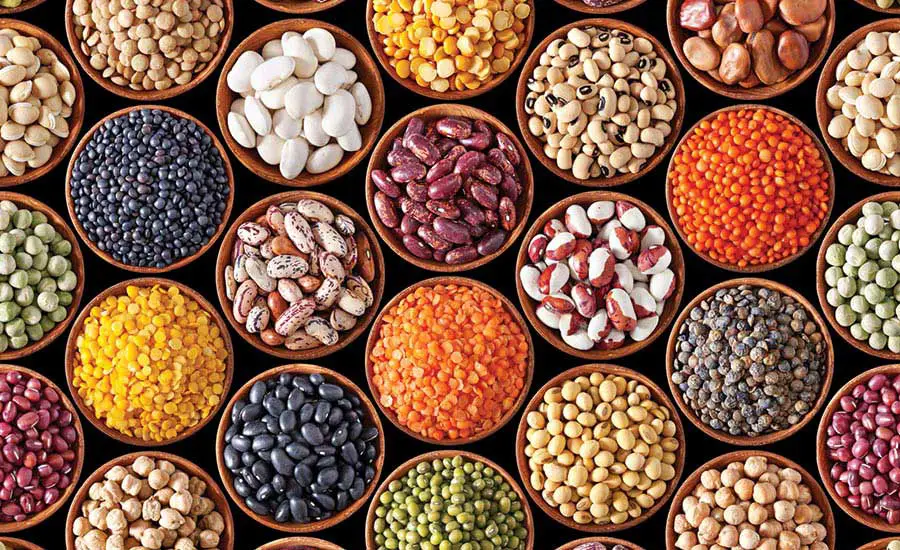- Pulses are an important component of the global agrifood system and play a critical role in food security, nutrition, and economic development.
- Pulses refer to the edible seeds of leguminous plants, including beans, lentils, chickpeas, and peas, among others.
- In 2021, Tanzania’s exports of pulses were valued at over US$ 269 million, making it the leading pulses exporting country in Africa.
Tanzania is a leading producer of five commercially cultivated pulses: dry beans, chickpeas, pigeon peas, green grams, and cowpeas. These crops are grown in various regions of the country, including Manyara, Kagera, Kigoma, Mbeya, Mtwara, Dodoma, Njombe, Singida, and Mwanza. In addition, smaller quantities of bambara nuts and dry peas are also cultivated in Tanzania.
The country’s production of pulses is noteworthy, with an annual output of around 2 million tons. Dry beans are the largest contributor, accounting for 1.21 million tons, followed by pigeon peas (250,000 tons), chickpeas (180,000 tons), green grams (80,000 tons), and cowpeas (174,260 tons). Bambara beans make up the smallest portion of the production, with 52,239 tons.
Tanzania’s strong performance in pulses production has earned it the title of Africa’s top producer of dry beans and the second-largest producer of pulses on the continent. On a global scale, the country ranks 10th in pulses production.
In 2021, Tanzania’s exports of pulses were valued at over US$ 269 million, making it the leading pulses exporting country in Africa. This is a significant accomplishment, surpassing the values of coffee, tea, and tobacco, which are often touted as cash crops by the government. The value of pulses exports was even larger than the values of Tanzanite (US$ 100 million), Diamond ($8.5 million), and other precious metals exported during the same year.
The impact of the pulses industry extends far beyond just its export value. Approximately 95% of farmers producing pulses in Tanzania are small-scale farmers who cultivate less than 5 acres of land. Pulses have been shown to be a resilient crop that can withstand the effects of climate change and offer cost-effective production. Despite these benefits, the industry still requires increased funding and support to reach its full potential.
Contribution of Pulses in the Agrifood System
Pulses are an important component of the global agrifood system and play a critical role in food security, nutrition, and economic development. Pulses refer to the edible seeds of leguminous plants, including beans, lentils, chickpeas, and peas, among others. These crops are known for their high protein content and other essential nutrients, making them an important source of food for millions of people around the world.
In the agrifood system, pulses contribute to food security by providing a reliable and sustainable source of nutrition for both rural and urban populations. The protein content of pulses makes them a valuable food source for those who may not have access to animal-based proteins, such as meat and dairy. This is especially important in developing countries, where malnutrition and food insecurity are prevalent.
Furthermore, pulses are an important source of income for millions of small-scale farmers around the world. The global pulse market is valued at billions of dollars, and many countries, particularly in the developing world, rely on pulse exports as a significant source of foreign currency. By supporting the growth and development of the pulse sector, governments and organizations can help to improve the livelihoods of small-scale farmers and promote economic development.
Despite their numerous benefits, the contribution of pulses in the agrifood system is often overlooked. To ensure that their full potential is realized, there is a need for increased investment in research, development, and marketing of pulses. This includes improving production methods, developing new pulse varieties, and increasing the demand for pulses through awareness campaigns and education.
Overcoming Bottlenecks in Pulse Production in Tanzania
Pulse production in Tanzania has the potential to be a significant contributor to the country’s economy and food security. However, there are a number of bottlenecks that are currently hindering the growth and development of the pulse sector in the country. These bottlenecks must be addressed in order to fully realize the potential of pulse production in Tanzania.
One of the main bottlenecks in pulse production in Tanzania is the lack of access to finance. Many small-scale farmers in the country struggle to access the capital they need to invest in their farms and expand their operations. This can lead to limited production and decreased competitiveness in the global market. To overcome this bottleneck, the government and development organizations can work together to provide small-scale farmers with access to financing and support services, such as training and technical assistance.
Another bottleneck in pulse production in Tanzania is the lack of access to modern technologies and best practices. Many farmers in the country still use traditional methods of farming, which can limit their productivity and competitiveness. To overcome this bottleneck, the government and development organizations can invest in training and extension services to help farmers adopt modern technologies and best practices. This can include providing access to new seed varieties, modern farming equipment, and effective pest management techniques.
Another challenge in pulse production in Tanzania is the limited availability of high-quality seed. This can lead to reduced yields and decreased competitiveness in the global market. To overcome this bottleneck, the government and development organizations can invest in seed production and distribution programs to ensure that farmers have access to high-quality seed. This can include providing access to seed production facilities, training on seed production and storage techniques, and seed distribution networks.
Finally, there is a need to improve marketing and export infrastructure for pulses in Tanzania. This can include developing new markets for pulse exports, improving transportation and storage facilities, and providing support for marketing and advertising campaigns. By addressing these bottlenecks, the government and development organizations can help to promote the growth and development of the pulse sector in Tanzania and increase its competitiveness in the global market.
